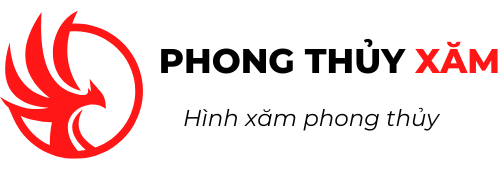Content

One in 4 business owners says they have had to decrease the number of employees on their team this year. Another 15% say they’ve relied more heavily on contractors to keep their business afloat. Over half (51%) of small business owners reported supply chain disruptions had a significant impact on their business. Another 30% of owners reported it had a moderate impact and 14% reported a mild impact.

Simulations indicate that industry compositions partly placed these groups at a higher risk of business activity losses. Immigrant business owners experienced substantial losses in business activity of 36%. Female business owners were also disproportionately affected (25% drop in business activity). Continuing the analysis in May and June, the number of active business owners remained low—down by 15% and 8%, respectively. The continued losses in May and June, and partial rebounds from April were felt across all demographic groups and most industries.
The future of entrepreneurship: the few or the many?
Of respondents seeking PPP assistance, 85% have received their requested financial aid. For EIDL and SBA Loan Forgiveness, only 50% and 46% have had their requested assistance fulfilled, respectively. Perhaps the most surprising of these findings is that 26% of our respondents said they don’t expect their businesses to permanently change at all post COVID-19 crisis. They’ve also noted similar permanent adjustments they plan to make to their business.
Committee Cliff Notes: Weekly Recap – Week of February 28, 2023 – Majority Leader
Committee Cliff Notes: Weekly Recap – Week of February 28, 2023.
Posted: Fri, 03 Mar 2023 22:27:02 GMT [source]
Administrative data from payroll processors indicate similar declines in small business payroll in September, suggesting that small businesses have reduced payments to both employees and other suppliers.3Notably, expenses may be beginning to climb more quickly than revenues. Between early May and early July, median revenue growth was often higher than median expense growth, consistent with the continued upward trajectory of balances, and small business financial responses after other disasters . In contrast, from early July until the end of September, median expense growth was often higher than revenue growth, consistent with flattening balance growth and the beginning of a decline in median balances.
3 Financing for entrepreneurship
As in the case of the USA, PPP and EIDL funds were allocated to support businesses, and it is crucial to track who receives funding and how it helps small businesses to become more resilient and grow during the crisis. The study of Dörr et al. , “Small Firms and the COVID-19 Insolvency Gap,” focuses on fiscal policy in rescuing companies short of liquidity from insolvency. The authors show that, in the first months of the crisis, the small businesses that are the backbone of Germany’s economy benefited from large and mainly indiscriminate aid measures. The authors estimate the extent to which the policy response induced an insolvency gap and analyze whether the gap is characterized by firms that were already struggling before the pandemic. They also examined whether this insolvency gap differs with respect to firm size and find that the gap was larger for smaller firms.
What are the 9 reasons businesses fail?
- Not having an effective business plan.
- Not putting the customer first.
- Not hiring the right people.
- Lack of flexibility.
- Lack of innovation.
- Not understanding your industry.
- The wrong mindset.
- Ineffective marketing strategies.
If a more complete rebound does not happen soon the long‐term economic consequences could be severe. Many minority business owners will not have the resources to weather prolonged closures, reduced demand from health concerns, and a more comprehensive recession. The latest Census data indicate that the median level of wealth among black families is $13,000 and Latinx families is $20,000 compared with $139,000 among white families (U.S. Census Bureau, 2015).
Best Travel Insurance Companies
Arts, entertainment, and recreational services – Requested (27.9 percent) / Received (23.8 percent). Health care and social assistance – Requested (26.2 percent) / Received (23.3 percent). Educational services – Requested (27.8 percent) / Received (23.9 percent). Accommodation and food services – Requested (74.1 percent) / Received (67.7 percent). Educational services – Requested (69.1 percent) / Received (67.9 percent). On March 11, the World Health Organization declared COVID‐19 a pandemic which might have resulted in early demand shifts over health concerns predating shelter‐in‐place restriction policies.

Further research is needed to evaluate the longer-term impact of the pandemic on Black- and Hispanic-owned businesses. The first estimates of early‐stage impacts on active female business owners are also worrisome. Female business ownership is substantially lower than male business ownership and female‐owned businesses have lower revenues, employees, and profits on average (U.S. Census Bureau,2016).
DATA AVAILABILITY STATEMENT
That includes adding such things as How The Coronavirus Is Affecting Small Business benefits and instituting vaccine mandates. Finding and retaining qualified employees is also a big challenge for small businesses right now. Of those currently hiring, 87% are finding it difficult to recruit qualified candidates for open positions and 97% said it is hurting their bottom line, according to the Goldman Sachs survey.
These businesses are more financially fragile, with lower revenues and less cash liquidity than White-owned firms . Accordingly, they may have been more vulnerable to adverse shocks, especially if they were also operating in industries that were severely impacted. The papers in this special issue can be divided into four strands by the unit of analysis, policy implications, and the literature used. These strands can be connected to the four literatures distinguished in the previous section. The third strand deals with financial support to small businesses and entrepreneurship, building on the literature that addresses the negative effects of disasters and crises as well as macroeconomic responses to shocks. Finally, the fourth strand discusses the effect of various policy and well-being issues for small businesses during COVID-19 drawing on resilience and disaster theory literature.
The Impact of the COVID-19 Pandemic on Florida’s Small Business
The retailers were part of an on-going study of small-retailer financing that had commenced about a year before the onset of COVID-19, in which at baseline we had recruited some 3,285 participants. Specifically, small businesses might have fared better if the government focused primarily on controlling the virus at the very beginning of the pandemic, Schoar said. Going forward, the research suggests that small businesses would benefit from a stronger national response, as opposed to uncoordinated regional and state intervention. “What we were really surprised about is that somehow, it looks like for the majority of small businesses, it really was a national shock that affected everyone,” Schoar said.





